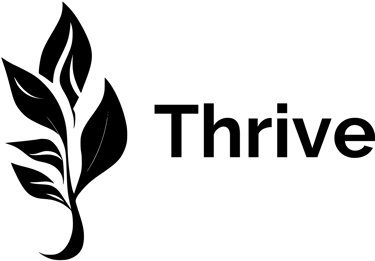Benefits and ROI: Making the Case for Ergonomic Office Investments
Unlock the financial power of ergonomic office investments. Learn about the benefits, ROI, and how to create a healthier, more productive workplace
6/27/20244 min read


In the bustling landscape of modern business, where productivity and employee well-being are paramount, ergonomic office investments have emerged as a strategic imperative. Beyond the immediate benefits of enhanced comfort and reduced physical strain, these investments offer a compelling financial case through tax benefits and a demonstrable return on investment (ROI).
ROI Benefits: The Ripple Effect of Ergonomic Solutions
While tax benefits provide a compelling financial incentive, the ROI of ergonomic office investments extends far beyond tax savings. Ergonomic solutions have been shown to have a profound impact on employee health, productivity, and overall job satisfaction.
Reduced Healthcare Costs: Ergonomic equipment can significantly reduce the risk of musculoskeletal disorders (MSDs), which are a leading cause of workplace injuries and absenteeism. By investing in ergonomic solutions, businesses can lower their healthcare costs and reduce the financial burden associated with employee injuries.
Increased Productivity: Comfortable and properly supported employees are more likely to be productive and engaged in their work. Ergonomic office solutions can help employees maintain focus, reduce fatigue, and improve overall work performance, leading to increased output and efficiency.
Improved Employee Morale: A workplace that prioritizes employee well-being through ergonomic investments sends a powerful message of care and concern. This can boost employee morale, job satisfaction, and loyalty, leading to reduced turnover and lower recruitment costs.
Tip: When selecting ergonomic office equipment, prioritize quality and adjustability to ensure that employees can customize their workstations for optimal comfort and support.
Calculating the ROI: A Comprehensive Approach
To truly understand the financial impact of investing in ergonomic office solutions, a comprehensive approach to calculating ROI is essential. This involves moving beyond simple cost analysis and delving into the multifaceted benefits that ergonomic investments bring to the table. By considering both direct and indirect returns, businesses can paint a complete picture of the value these investments deliver.
Direct Cost Savings: The Tangible Impact on the Bottom Line
The most immediate and quantifiable return on ergonomic investments comes in the form of direct cost savings. By reducing the risk of musculoskeletal disorders (MSDs) and other work-related injuries, ergonomic solutions directly impact a company's healthcare expenses. Fewer injuries mean lower medical costs, decreased workers' compensation claims, and reduced absenteeism. These savings can be substantial, especially in industries where repetitive tasks or physical strain are prevalent.
To calculate these direct cost savings, businesses can track the incidence of MSDs before and after implementing ergonomic solutions. By comparing the frequency and severity of injuries, they can estimate the reduction in healthcare costs attributable to ergonomic interventions. This data can then be used to quantify the ROI of these investments in terms of direct savings.
Indirect Benefits: The Hidden Value of a Healthier, Happier Workforce
While direct cost savings are significant, they only scratch the surface of the ROI associated with ergonomic office investments. The indirect benefits, though less tangible, can be equally impactful on a company's financial performance.
Increased Productivity: Ergonomic workstations promote comfort and reduce physical strain, allowing employees to focus on their tasks without distraction. This can lead to increased productivity, as employees are less likely to experience fatigue, pain, or discomfort that can hinder their work performance.
Improved Morale: Investing in employee well-being sends a powerful message that the company values its workforce. This can boost morale, job satisfaction, and engagement, leading to a more positive and productive work environment.
Reduced Turnover: A comfortable and supportive workplace can make employees more likely to stay with the company. This can reduce turnover costs associated with recruiting, onboarding, and training new hires.
Quantifying these indirect benefits can be more challenging, but various methods can be employed. Surveys can be used to assess employee satisfaction and engagement levels before and after implementing ergonomic solutions. Productivity metrics, such as output per hour or error rates, can also be tracked to identify improvements. By analyzing this data, businesses can estimate the indirect financial gains resulting from ergonomic investments.
The Holistic Approach: Combining Direct and Indirect Returns
A comprehensive ROI calculation takes both direct and indirect returns into account, providing a holistic view of the value ergonomic office investments bring. By combining the quantifiable cost savings with the less tangible benefits of increased productivity, improved morale, and reduced turnover, businesses can gain a deeper understanding of the long-term financial impact of these investments.
This holistic approach not only strengthens the business case for ergonomic solutions but also helps companies make informed decisions about where to invest their resources. By understanding the full scope of the ROI, businesses can prioritize ergonomic interventions that offer the greatest potential for both financial and human capital returns.
Did you know? Studies have shown that for every dollar invested in ergonomic solutions, businesses can expect a return of two to four dollars in cost savings and productivity gains.
Making the Case: Building a Business Case for Ergonomic Investments
To secure buy-in from stakeholders, it is crucial to build a compelling business case for ergonomic office investments. This involves clearly articulating the financial benefits, including tax savings and ROI, as well as the broader impact on employee health, productivity, and morale.
Tip: Gather data on the prevalence of MSDs in your industry, as well as the associated costs, to strengthen your business case and demonstrate the potential for significant savings.
Partnering with Experts: Thriving Exports Ergonomic Solutions
Navigating the world of ergonomic office investments can be complex, but businesses don't have to go it alone. Thrive Exports, a leading provider of ergonomic solutions, offers a comprehensive range of products and services designed to help businesses create healthier, more productive work environments.
Thrive Exports team of experts can assist with everything from selecting the right ergonomic equipment to developing a customized implementation plan. By partnering with Thrive Exports, businesses can leverage their expertise and experience to maximize the benefits of their ergonomic investments.
In conclusion
Ergonomic office investments offer a compelling financial case through tax benefits and a demonstrable ROI. By fostering a healthier, more productive, and engaged workforce, these investments not only contribute to a company's bottom line but also create a positive workplace culture that values employee well-being. To explore the full range of ergonomic solutions and services offered by Thriving Exports, visit thriveexports.com and take the first step towards a more comfortable, productive, and profitable workplace.
THRIVE
Contact Us
Call/Whatsapp: +91 913 619 7264
Email: sales@thriveexports.com
